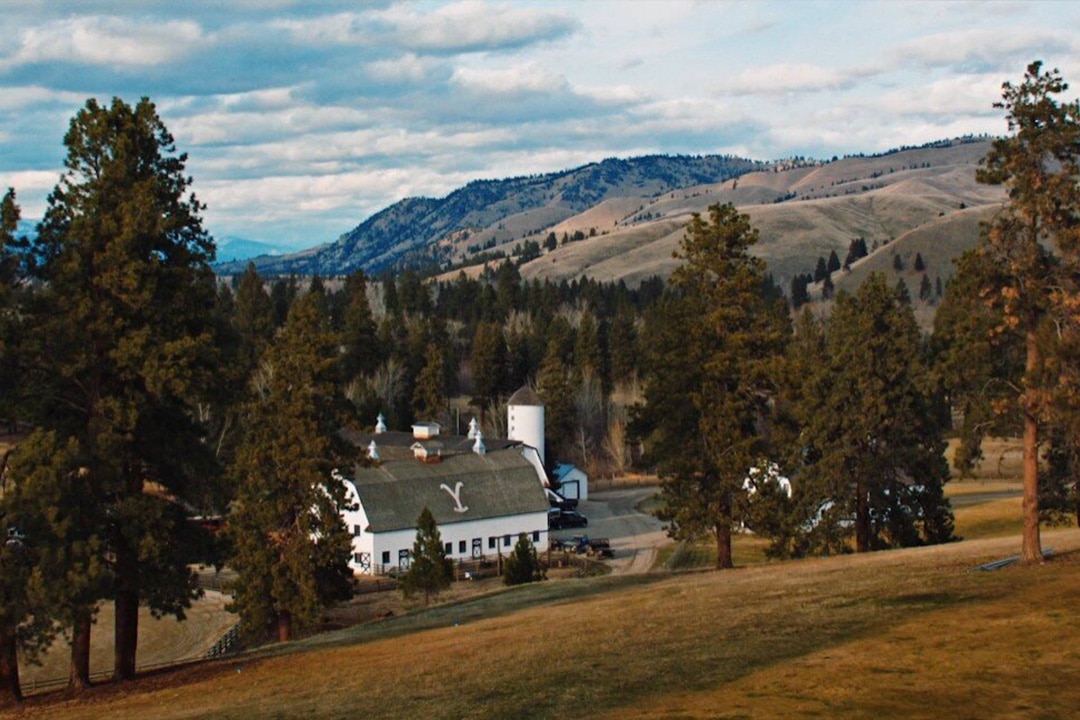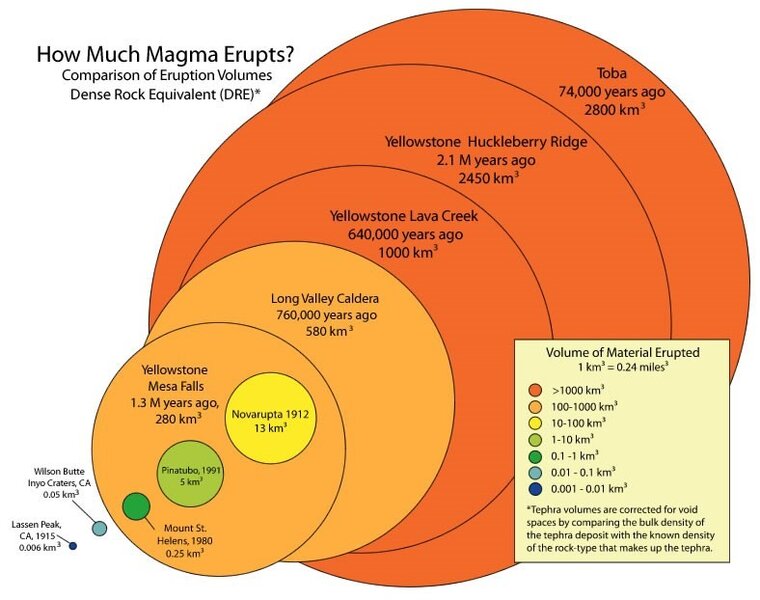Create a free profile to get unlimited access to exclusive videos, sweepstakes, and more!
Good news! Yellowstone super volcano unlikely to erupt anytime soon
But it definitely WILL erupt, someday.

Yellowstone (now streaming on Peacock!) is a modern day Western which takes place at the fictional Yellowstone Dutton Ranch. While the landscapes are serene, the action in the show is anything but. It centers both on internal family drama as well as growing conflict between the Duttons and neighboring parties. The stakes are high and sometimes deadly, but they pale in comparison to what will happen when the real Yellowstone next blows its top.
It's believed that Yellowstone, which is a super volcano of epic proportions, erupts every 600,000 to 800,000 years, on average. That’s based on three large explosions which have occurred over the last 2.1 million years. The last of those three massive eruptions happened about 631,000 years ago which, if our math is correct, sort of feels like we’re just about due for a blow up.
Fortunately, volcanoes, super or otherwise, don’t follow predetermined schedules and an average eruption rate is only an average. Which means we can’t rely on what’s happened in the past to warn us about what might happen in the future. We need science for that, and researchers have been studying Yellowstone for decades hoping to better understand our planet and hopefully get some advance warning before it goes boom. Now, a recent study published in the journal Science is rewriting our understanding of what’s happening inside one of the largest active geological formations in the world.
While Yellowstone harbors the potential for catastrophic destruction, most of what’s under the surface is hard, cool, crystalline rock with some molten magma mixed in. Scientists have learned that the ratio of solid crystals to liquid magma is an indicator of if and when the super volcano will go critical. It’s believed that an eruption will occur once the fraction of liquid magma reaches between 35 and 50 percent.
Prior models suggested that the melt fraction beneath Yellowstone was between 5 and 15 percent, comfortably below what’s needed to jumpstart the worst day in recorded history. Using state of the art seismic imaging, a team of international researchers have created a more robust map of the melt fraction beneath Yellowstone, refining our understanding of where it is in its life cycle.
RELATED: 'Dante's Peak' would look right at home on the surface of Jupiter's volcano moon Io
The technology uses the relative speeds of different types of seismic waves as they travel through the ground to reconstruct what sorts of materials they encountered. One type of wave, S waves, moves especially slowly through liquids like magma, which helps to reveal its presence. By measuring how long it takes S waves to travel a given distance and comparing the transit times to other types of waves, scientists can calculate how much liquid magma is stored underground.
Their new map bumps the melt fraction up from between 5 and 15 percent to somewhere between 16 and 20. That’s a little closer to the lower eruption limit than we’d like but researchers caution there’s no need to worry in the short-term. While there is more magma than we previously supposed, it’s still well below the danger zone. Importantly, these new measurements do not reflect an actual increase in the melt fraction under Yellowstone. It’s tempting to interpret the data as if there were previously a lower melt fraction and now it’s higher, but the jump in percentage is actually a result of better instruments and technologies. The problem didn’t get any bigger, we’re just seeing it more clearly.
It also tells us a little bit more about how Yellowstone’s cycle of serenity and destruction plays out. It was previously hypothesized that the formation spent most of its time in a largely docile crystalline state. Then, almost all at once, it would undergo a brief but intense injection of magma leading to an eruption. This new data changes the model and suggests that instead, Yellowstone spends a significant portion of its life with moderate amounts of melt, more akin to slowly rising waters than a flash flood. Which means the whole process might be much more gradual than we thought. That’s good, because gradual progressions can be monitored more easily than unpredictable geologic sucker punches.
If and when Yellowstone finally does pop, there will be very little you can do about it, so you might as well put it out of your head and enjoy the fictional lava-based adventures of Airplane vs. Volcano, now streaming on Peacock!



























